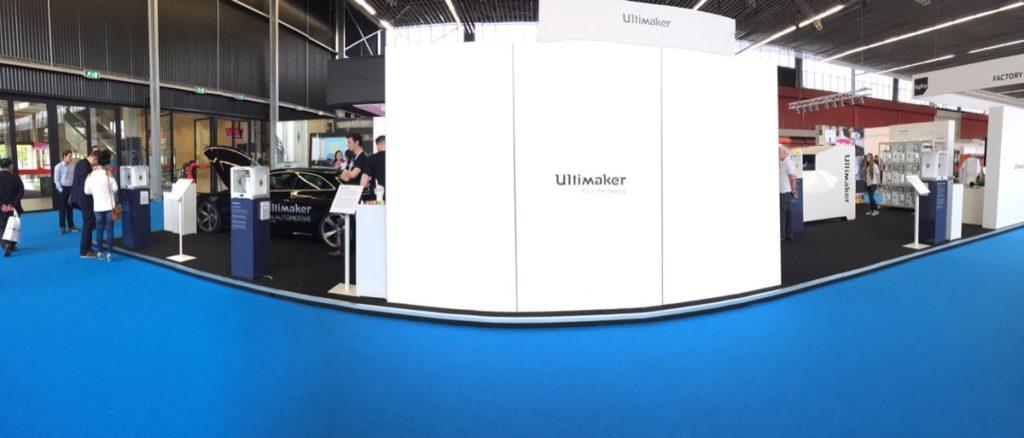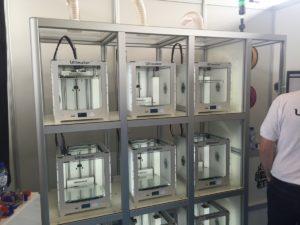 About a decade ago the Dutch envisioned ways to bring the “boring” technologies for rapid prototyping to the masses and embraced 3D printing. Today, while the mass media report on the impending doom of 3D printing in a sort of “reverse hype”, one Dutch company is showing that the dream is far from dead. Instead it is evolving in something that has empowered more people than ever, opening the doors to the world of advanced manufacturing to everyone who could afford to buy a desktop 3D printer. Ultimaker is now leading this new chapter of 3D printing and I had the opportunity to sit down with CEO Jos Burger to better understand how this happened and where the company is now heading.
About a decade ago the Dutch envisioned ways to bring the “boring” technologies for rapid prototyping to the masses and embraced 3D printing. Today, while the mass media report on the impending doom of 3D printing in a sort of “reverse hype”, one Dutch company is showing that the dream is far from dead. Instead it is evolving in something that has empowered more people than ever, opening the doors to the world of advanced manufacturing to everyone who could afford to buy a desktop 3D printer. Ultimaker is now leading this new chapter of 3D printing and I had the opportunity to sit down with CEO Jos Burger to better understand how this happened and where the company is now heading.
“There is no doubt that people are moving away from the hyped up consumer 3D printing idea. No one is talking about it any more. Now it is all about the industry and the incredible possibilities that 3D printing can offer to professionals at all levels,” Mr. Burger explains as we sit down to start the interview.
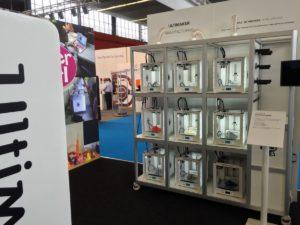 He joined Ultimaker a little over two years ago to help the company move from an innovative and enthusiastic project to a multinational enterprise. And he has done that without questioning the company’s open source and community-based nature.
He joined Ultimaker a little over two years ago to help the company move from an innovative and enthusiastic project to a multinational enterprise. And he has done that without questioning the company’s open source and community-based nature.
“I came to Ultimaker to do the four things that a CEO should do: make sure the structure makes sense, have the right people on board to ensure Ultimaker’s success, make sure the company always has cash and be able to explain the story of the company in a few minutes,” he says.
Mr. Burger’s informal approach is aligned with a very clear vision on how to successful scale up globally, something that Dutch 3D printing companies like Ultimaker as well as Formfutura, colorFabb, 3D Hubs and Shapeways seem to be particularly good at.
“I think it has to do with Holland’s historical tradition as a small country where people always understood they needed to trade globally in order to generate revenues and obtain,” Mr. Burger explains. “The Dutch have traded all over the world for centuries and this approach is perfectly aligned with a small and yet globally distributed industry such as 3D printing.”
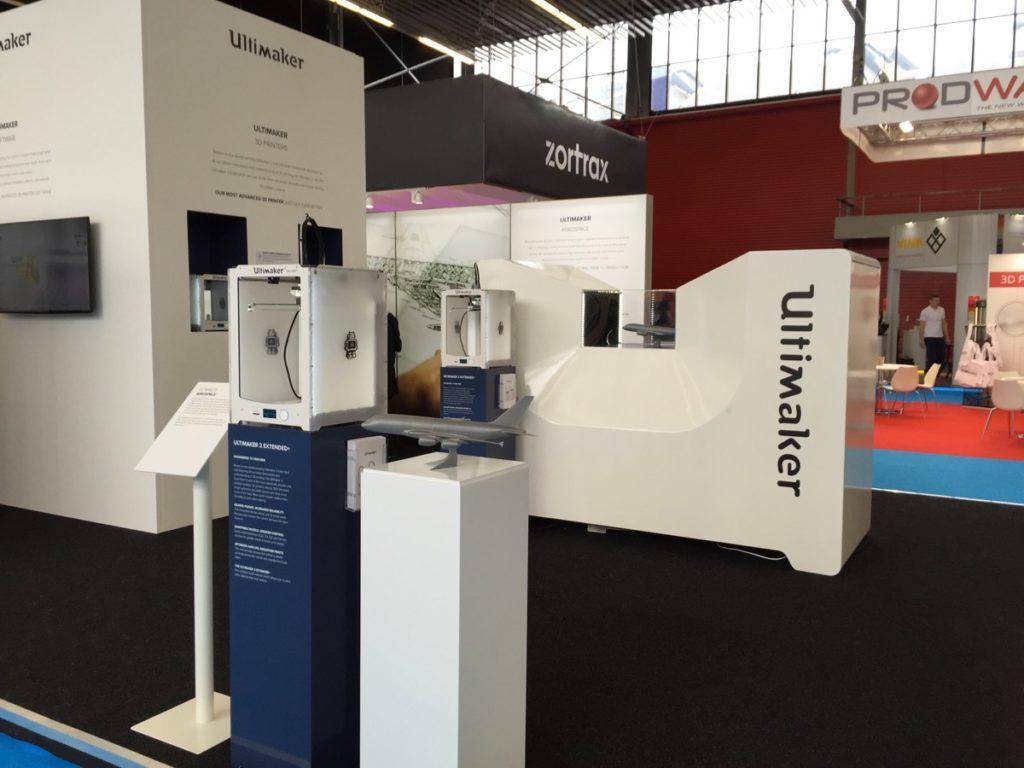 Ultimaker’s HQ is still located near the original “farm” in Geldermalsen, however the factory has moved to a much larger site. The company now has 210 employees worldwide, an assembly facility in outsourcing in Memphis and a US office in Boston set to grow to 20 employees.
Ultimaker’s HQ is still located near the original “farm” in Geldermalsen, however the factory has moved to a much larger site. The company now has 210 employees worldwide, an assembly facility in outsourcing in Memphis and a US office in Boston set to grow to 20 employees.
“Next we are looking to the APEC countries,” Mr. Burger says, “We are seeing a lot of interest for our machines in China, South Korea and Japan”.
How is Ultimaker so successful as a global brand, in spite of the intense competition from local 3D system manufacturers? Mr. Burger believes it is a combination of factors.
“For one, we have been extremely loyal to our customers,” he says. “We’ve had our issues but we always kept our friends very close to us and have been able to accommodate them in many different aspects. We have built a global support infrastructure while we also stayed true to our original hardware open source philosophy. That gave us a lot both in terms of actual contributions to R&D and in increasing the loyalty of our customer base.”
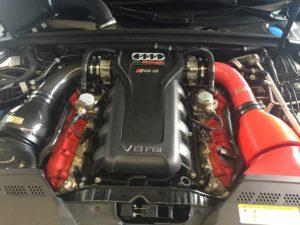 Although exact data is hard to come by today Ultimaker is very likely to be the current market leader in the $2000 to $5000 price range. However Mr. Burger is quick to point out that they are not interested in being alone and they welcome healthy competition in the market.
Although exact data is hard to come by today Ultimaker is very likely to be the current market leader in the $2000 to $5000 price range. However Mr. Burger is quick to point out that they are not interested in being alone and they welcome healthy competition in the market.
“We have been lucky because some of our main competitors did deliver what the market was expecting from them to and we were ideally positioned to take advantage of that. We don’t believe in companies that are only selling boxes, that is not working anymore, and we wanted to be able to offer our customers a complete solution, which includes a wider range of materials and software. We invested significantly in compliance in order to best cater to the professional needs of companies. It is amazing how the adoption of our systems is expanding in the industry, bringing immediate benefits to more and more smaller companies, not just the larger ones.” Now more young people are starting with their own 3D printers, growing up as engineers and moving into companies bringing new ideas and processes. “We are fully blown away by the adoption rate in the industry,” Mr. Burger says.
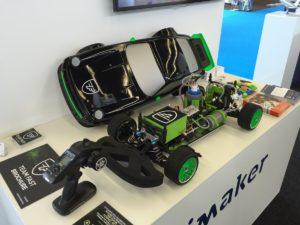 In order to best cater to these evolving industry needs, Ultimaker is presenting its own 3D printer farm concept at the Additive Manufacturing Europe show. This approach is focused mainly on the education as well as the industrial space.
In order to best cater to these evolving industry needs, Ultimaker is presenting its own 3D printer farm concept at the Additive Manufacturing Europe show. This approach is focused mainly on the education as well as the industrial space.
“In education you need an effective tool to manage several projects, while in the industrial sector we are seeing that more people are looking for customized series of objects,” Mr. Burger explains. “Typically we are talking about series of 200-800 pieces. You just cannot do these kind of numbers through the traditional industrial infrastructure so we see a lot of companies moving in this way. We see it simply an a necessary evolutionary step as people realize that if you combine 50 to 100 printers you can facilitate many applications in automotive, aerospace and even in the consumer goods segment.”
Now it is time to look to the future and Ultimaker sees itself as a strategic and complementary element of a global push toward real digital, additive manufacturing. This vision takes into consideration companies like HP, which Mr. Burger applauded as the ideal technology for digital manufacturing even higher numbers of parts, as well as the 3MF file format and Consortium, which Ultimaker is part of, and which seeks to develop (Mr. Burger said they are very close to delivering) a more efficient and practical open 3D file format.
“As far as we are specifically concerned, over the next two years we are going to continue to offer our customers complete and fully compliant solutions,” he says. “We are going to bring new machines to the market as long as it makes commercial sense to do. We can’t be too specific but we will certainly focus on enabling our customers to 3D print far more complex products with an ever growing range of materials.”
It really seems like we are only beginning to scratch the surface of the possibilities and Ultimaker seems ideally positioned to continue driving the market in news directions.
Subscribe to Our Email Newsletter
Stay up-to-date on all the latest news from the 3D printing industry and receive information and offers from third party vendors.
You May Also Like
3D Printing Unpeeled: New Arkema Material for HP, Saddle and Macro MEMS
A new Arkema material for MJF is said to reduce costs per part by up to 25% and have an 85% reusability ratio. HP 3D HR PA 12 S has been...
3D Printing News Briefs, January 20, 2024: FDM, LPBF, Underwater 3D Printer, Racing, & More
We’re starting off with a process certification in today’s 3D Printing News Briefs, and then moving on to research about solute trapping, laser powder bed fusion, and then moving on...
3D Printing Webinar and Event Roundup: December 3, 2023
We’ve got plenty of events and webinars coming up for you this week! Quickparts is having a Manufacturing Roadshow, America Makes is holding a Member Town Hall, Stratafest makes two...
Formnext 2023 Day Three: Slam Dunk
I’m high—high on trade show. I’ve met numerous new faces and reconnected with old friends, creating an absolutely wonderful atmosphere. The excitement is palpable over several emerging developments. The high...


